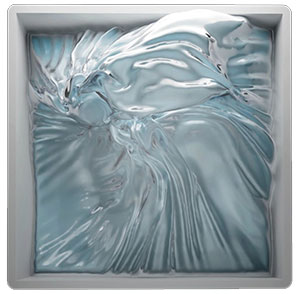Q&A: Artist Refik Anadol on AI-based NFTs for Instagram
Anadol raised $80,000 for Alzheimer’s research as part of the select group of artists to test out Instagram’s NFT marketplace

Refik Anadol; Photo: Efsun Erkilic
Instagram has begun testing out its NFT marketplace by offering a select group of US creators on Instagram the opportunity to sell the digital collectibles directly via Meta’s social media platform.
Blockworks spoke to one of those creators, Refik Anadol, whose series of so-called artificial intelligence (AI) data paintings, or software-based artworks, sold out on Monday after only a few minutes.
His collection called Sense of Healing: AI Data Paintings — 20 editions of four collectibles — is one of the first non-fungible tokens to sell on Instagram. In total, the collection raised nearly $80,000 for the Alzheimer’s Foundation.
A Turkish-American Ethereum miner turned NFT artist, Anadol said that listing an NFT on Instagram is “as easy as adding a post.”
Blockworks: Tell us about how the partnership with Meta started and about your new collection.
Refik: I coined the term data painting in 2008, and I’ve been working as an AI artist since 2016 trying to create a social impact as much as possible. When the Meta team and Instagram said, ‘hey, we are doing this new creator economy move,’ of course I said yes to the experiment.

We trained more than one hundred AI models for this project. We worked in collaboration with an amazing neuroscience company called MindMaze to create a dataset representing how the human mind heals. So these are very positive representations of how the human mind becomes better.
This summer, I took this data and created one piece, which was auctioned at UNICEF for 1.7 million euros. For Instagram, I took four still AI data paintings from this unique series using the same technology — FMRI, DTI and EEG data sets transformed into an AI data painting.
Blockworks: If your collection is resold on a secondary marketplace, 10% of the resale value will go to you. Are you choosing to collect royalties? And what is your take on marketplaces that have gone royalty-optional?
Refik: This drop is completely donated to the Alzheimer’s Foundation. So I’m not getting any personal benefit from this. It’s more about transforming this amazing moment to something more powerful than just personal income.
[Meta] allows a creator to select their royalties starting from the minimum five percent, which is amazing because the secondary market is another powerful economy. It’s very important for the creators because it’s where the wider economy shares more directly.
Why do we need this? Because in the last centuries, the entire art market was not based on royalties. The whole movement started because of this powerful chance of getting this income. So it’ll be very sad to go back to the last century.
Blockworks: Given the current market conditions, what kind of utility are people now expecting from NFT projects?
Refik: When the artist has a journey, his or her life is a utility. For example, when my works are collected by my collectors, I invite them to special openings and special previews — the utility is being special, being a part of the artist’s journey. I think that’s enough as a means of utility. Our idea is to bring more technology and innovation into the metaverse as an experiential world and let our collectors become a part of a new universe that they have invested in.
Blockworks: Do you think that Meta and Instagram are the right platforms to work with in order to accomplish that?
Refik: Meta has this clear vision that they fully believe in the metaverse and that they are creating the metaverse. So I think it’s a perfect partner for unfolding this narrative to a larger audience. Instagram is a public space. Instagram is truly accessible to the world. I think it’s a very great time to create these mainstream connections and make people aware of this new movement.
Blockworks: What is your opinion on the future of NFT technology and any benefits it adds to an artist?
Refik: It’s an incredible technology that will bring a lot of inclusive — hopefully — discussions. First of all, I think NFTs are just a technology, a tool. But I think what we do with that, what we create, instills the value of the art itself. But the technology is incredibly open and very welcoming for anyone, technically, in the world. And that openness, egalitarian side of things is incredibly exciting. There’s no door or a gate to push open — it’s just there.
Now it’s time to dive deep into the art context. It’s an intellectual time. The question now is —
What else can we do with [the technology]? I’ve very much been focusing on giving back to charities. We donated more than $5 million in the last two years to charities. But we also do public art free that is open to everyone.
Get the news in your inbox. Explore Blockworks newsletters:
- The Breakdown: Decoding crypto and the markets. Daily.
- 0xResearch: Alpha in your inbox. Think like an analyst.
- Empire: Crypto news and analysis to start your day.
- Forward Guidance: The intersection of crypto, macro and policy.
- The Drop: Apps, games, memes and more.
- Lightspeed: All things Solana.
- Supply Shock: Bitcoin, bitcoin, bitcoin.





